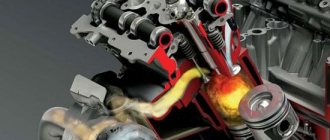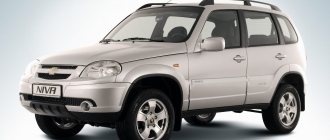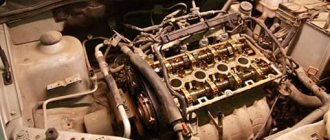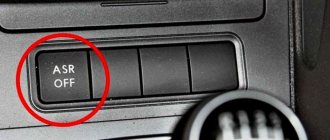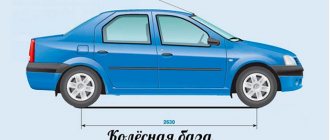Drift
(eng.
Drift
) - a cornering technique and a type of motorsport characterized by the use of a controlled drift at the maximum possible speed and angle to the trajectory to maintain on the track. Drifting is a type of extreme high-speed motorsport that has a lot of fans. It is characterized by the deliberate stalling of the rear axle during a turn, passing it in a controlled drift at the highest possible speed. The angle of the rear wheels during drifting exceeds the angle of the front wheels, sometimes significantly. This type of driving speaks of the highest skill of the driver, his ability to control the power of the car and direct it in the right direction.
History of Drift
It all started in the 70s in Japan, it was this country that became the birthplace of drifting as a separate movement. The first drifters are street racers who hone their technique on winding mountain roads. They used it to travel the track faster, counting down to the millisecond. The key person in the origin of drifting is Kunimitsu Takahashi. This Japanese man was originally a motorcycle racer, but later continued his career as a race car driver.
He has many victories in professional sports, including the 1961 German Grand Prix in road racing. An accident forced him to switch to motorsport, after which he began a new path. Kunimitsu Takahashi was also successful in automobile competitions, even taking part in Formula 1. To date, the Japanese has completed his career, this happened at the age of 47 years.
His driving style gave rise to a whole movement of fans of extreme turns and scorched rubber, and a new type of spectacular professional sport gradually emerged.
The second key person in the emergence of this style of riding is Keiichi Tsuchiya, who later became its king. This Japanese guy has gained fans from all over the world, even making a video about his amazing drifting skills. It was thanks to him that extreme racing became legal. In 1999, the D-1 Grand Prix Series was created and remains the world's greatest drifting association to this day.
All to the race track
The best thing to do is drift without endangering anyone. “Come to a specialized racing track for emergency training schools, where you can be sure that there will be no extraneous cars or pedestrians on the site,” Farid Aindinov, executive director of the Center for Superior Driving Excellence, explained to RG. Under the supervision of an instructor, you can not only skid, but also learn how to do it correctly.
Well, we’re going to the track in Dzerzhinsky, where the classes are held. Next to me, the instructors decide to put Irina, a seasoned drifter, in a Subaru with all-wheel drive, who kindly agreed to take part in the experiment. To, so to speak, see the difference between a pro and a beginner.
The first exercise is “circle”. The task is to slide it along the outer radius in a continuous skid. Ira is self-taught with extensive drifting experience. But racing at the racetrack is also new to her. And now Subaru is already turning around. It was not possible to immediately direct the car along the desired trajectory, but with each new attempt the drift became better. Largely thanks to the instructor’s radio instructions: “More gas, straighter steering wheel.” As a result, after just a few minutes, Ira, like a compass, drew a circle in a beautifully calibrated drift.
My time has come to show what I am capable of. I approach the circle and give full throttle, turning the steering wheel to the side. My “golf” led a little, but it was difficult to call it a drift. Several more unsuccessful attempts. “There’s no way on front-wheel drive - either rear-wheel drive or full-wheel drive, you need to try,” explained the coach. Irina gives me a ride in her Subaru. Within a couple of minutes I was able to skid half a circle. The excitement is truly overwhelming. At some point, I clearly overdo the speed, and the car gets carried away into a snowdrift. The blow hit the right side. Fortunately, there were no injuries; loose snow softened the blow. However, my drift ended there. But Ira still passed the “snake”. This exercise is also done in regular driving schools. But only here you need to maintain a skid from cone to cone. She also coped with this task.
The experiment showed that experience is very important, which helps a motorist quickly navigate on ice. But an instructor can quickly teach a beginner how to drift - the main thing is to listen carefully to the commands and not give free rein to your emotions.
The physics of skidding in drifting or how it happens?
To figure out how to drift with rear-wheel drive, you first need to familiarize yourself with the physics of drifting. When entering a turn, the rear wheels are forced to slide due to a sharp increase in torque on them. In this case, the trajectory of the car is set in such a way that its rear part begins to move ahead of the front.
Under certain conditions, the car is kept in a skidding state until the end of the turn. After passing, the rear wheels are given the opportunity to restore normal traction and the car stabilizes.
A conditionally controlled skid on a rear-wheel drive car can be divided into 3 stages:
- entering a skid;
- maintaining it throughout the entire turning trajectory;
- stabilizing the car, that is, getting out of a skid.
How to make a skid?
To enter a skid, before starting a turn, you need to shift the center of gravity of the car to the front axle. For this purpose, short-term braking is used. After shifting the weight, it is necessary to simultaneously direct the car in the direction of the skid and cause the rear wheels to slide. To do this, the steering wheel is intensively turned towards the turning path, and the accelerator pedal increases the torque on the rear wheels.
To keep the car in a skid throughout the maneuver, it is necessary to maintain sufficient engine speed to ensure constant sliding of the rear wheels. The steering wheel adjusts the correct trajectory of movement.
If the car comes out of a skid on its own and begins to stabilize ahead of time, then it is necessary to increase the engine speed and set the steering wheel to a steeper steering angle.
If you overdo the gas pedal, the car may go into an uncontrolled skid and simply spin out.
How to get out of a skid?
To get out of a skid, the accelerator pedal is smoothly released until the drive wheels stop sliding, and the car is leveled by the steering wheel in the direction of further movement. At the same time, you should not sharply reduce the engine speed, as this can lead to instability of the car and it skidding in the opposite direction.
To learn controlled skidding in a rear-wheel drive vehicle, you should choose a large area of territory where there are no other cars, obstacles or people. Gradually increasing the speed and skidding angle, you need to feel how the car behaves in certain conditions.
The rear-wheel drive drifting technique may one day come in handy for the average driver. In extreme situations, the ability to more abruptly change the trajectory of a car or safely pull it out of an unexpected skid can save the lives of many people.
Why do you need to be able to drift?
It is enough for an ordinary motorist to be able to cope with skidding. Or - what is more correct - to prevent them. Provoking a skid in the form of drifting is more of a spectacular element inherent in racing than a skill necessary for a car enthusiast.
However, there is also a practical meaning in the ability to drift:
Purposeful drift allows you to learn how to cope with drifts. For a person who practices drifting, all standard drifts on the road will seem like a pleasant game.
The driver gains greater confidence in his actions, better control over the behavior of the car, and a “feel for the road.”
When others lose their nerve and take the wrong actions, the drifter always knows how to behave in a pre-accident situation: while driving, he takes exactly those steps that are necessary at each specific moment.
Using his skills, the drifter prevents the car from drifting during accidents on the road.
The drifter gains the ability to make perfect turns at speed.
And the last thing: master the controlled drift technique not to drift on the roadway, but to become a first-class motorist who, in a pre-accident situation, saves the life of not only yourself, but also those around you.
5 1 vote
Article rating
Drift - which cars are suitable
There are two main requirements for a drift car: it must be rear-wheel drive, and its power must be at least 160 horsepower. Let's look at the different options.
Rear wheel drive drift
First, let’s delve a little into the physics of skidding in order to better understand the essence of the process. At the moment the skid begins, the rear wheels are forced to begin to slide, this is facilitated by a sharp increase in torque. The trajectory of the vehicle should ensure that the rear part moves ahead of the front part of the car. If special conditions are created, the car will be in a skid until the turn ends. Upon completion, the rear wheels engage with the surface, which allows the machine to take a stable position.
To start learning drifting, you need to know what stages a drift consists of, performed on a car with rear-wheel drive.
- Entering into a skid is carried out by shifting the center of gravity of the car to the front axle. This effect can be achieved through short-term braking. As soon as the weight is shifted, the car is directed towards the turn, and the rear wheels begin to slide. The driver must quickly turn the steering wheel in the direction of the turn and increase the torque using the gas pedal.
- Support for skidding along its entire trajectory is ensured by maintaining sufficient speed of the power unit. In this case, the rear wheels will be in constant sliding. Due to the steering, the direction of movement of the vehicle is corrected. The car can independently exit the maneuver; to prevent this situation, the engine speed is increased and the steering angle is taken to a steeper angle. The gas needs to be controlled; if you overdo it, the skid will no longer be controllable, and the car will turn around.
- Exiting the maneuver requires smoothly releasing the gas pedal. The drive wheels should come out of the slip, and the car will be leveled by the steering. A sharp decrease in speed will cause instability of the car and force it to maneuver in a different direction.
This is the basics of rear-wheel drive drifting that must be well understood. Without this, it will be impossible to learn how to drift. The learning process is carried out according to the following principles:
- choose a large, open place for drifting without people or other cars;
- The speed and drift angle should be increased gradually until the car's behavior is felt well.
Front-wheel drive drift
Having mastered rear-wheel drive, you can familiarize yourself with how to drift on front-wheel drive. This process can be implemented in several ways. We will consider each of them.
The first option is implemented as follows:
- before the maneuver, the gear is reduced, the speed is increased and centrifugal force is created due to braking;
- clutch and neutral gear;
- the heel of the right foot presses on the gas, and the toe presses on the brake, in this case the speed will be instantly synchronized;
- depress the clutch and engage the downshift;
- We remove the sock from the brake and move it to the gas.
The second method is not applicable to all cars. It can be adopted by car owners with a large engine capacity and an impressive number of “horses” under the hood.
- to enter a turn, select the maximum speed;
- turn the wheels to the maximum in the direction opposite to the direction of skidding, and press on the gas;
- if the rear skids strongly, you will need to immediately turn the steering wheel in the direction the car is moving;
- add gas and continue moving in the right direction.
The easiest, most accessible for beginners and most common is the third method. Its essence is outlined below:
- We enter the maneuver at maximum speed;
- we synchronize the speed with the heel and toe, this technique has already been encountered before;
- lower the gear;
- the steering wheel is turned as far as possible in the opposite direction from the skid;
- turn on the handbrake and immediately release it when you pass the maximum skid point;
- the speed cannot be reduced;
- align the steering wheel in the direction of travel.
Drift on automatic
The automatic transmission can also be drifted. There will be some nuances here. There are three techniques, each of which will be discussed below.
Using the handbrake is a common technique that is often used in practice. Its essence is as follows:
- the car is stationary, deactivate the DSC stabilization system by long pressing the button (about 3-4 seconds);
- a yellow triangle should light up on the dashboard, this will indicate that the systems are turned off;
- The automatic transmission is moved to position D, and then the lever moves to the left to DS;
- We engage second gear to prevent automatic reset of gears when the wheels spin;
- we approach the turn and turn the steering wheel a little in the other direction, and then even less in the direction of the skid;
- at the same time, the handbrake is raised, the return button must be pressed;
- literally after a second we release the brake, going into a skid;
- at the same time we add gas (more gas - larger radius and vice versa);
- at the moment of exiting the maneuver, hold down the gas pedal, in this case the acceleration will not twitch;
- the throttle valve must be in the open position (fully or halfway);
- To level the accelerator, you need to smoothly release it, while releasing the gas.
Counter-shift involves preliminary displacement of the vehicle in a direction other than the direction of the maneuver. The driver's actions should be as follows:
- when performing a right maneuver, the car smoothly moves to the right;
- Next comes a sharp turn to the left, you need to aim not at the top of the maneuver, but slightly at the cutting point of the corner;
- the car will sway and its rear wheels will slide to the outside of the turn;
- To add power after counter-shift, a downshift is engaged (for rear-wheel drive and all-wheel drive) or the throttle is released on front-wheel drive.
The counter skid is based on a “dynamic whip”. This phenomenon increases the rotation of the vehicle during the final stage of the maneuver.
- to enter the maneuver, use the handbrake;
- when the front of the car turns in a direction different from the direction of the maneuver, the steering wheel is actively turned out and the traction is extinguished with a delay;
- As a result of such actions, the car will skid in a different direction.
As you can see, you can drift automatically. This process is no different in complexity from those discussed above.
You can learn to drift. It won’t be easy, this path is long, but interesting, dangerous and truly exciting. You need to approach such a sport only consciously, carefully thinking and calculating everything.
General recommendations
It is not recommended to study purely from videos and without an instructor. Nowadays, even on a motorcycle, some actively drift.
Moreover, this rule is the same for all cars. It does not depend on what type of drive is provided on the vehicle.
Installing a Chinese 2 din radio in a car: how to do it yourself
Before you start training, you need to make sure that all components are working properly. If the clutch is slipping, or there are problems with the handbrake, then you cannot drift on a vehicle that is obviously faulty. If necessary, adjust the handbrake yourself. In general, it would not be superfluous to undergo a full diagnosis. This will ensure that there are no malfunctions. Otherwise, even if you have the skills and experience, a controlled drift can end in extremely tragic consequences.
The road surface plays a big role. On asphalt the grip is better, but it slows down when sliding.
The coefficient of adhesion for soil, gravel and loose coating is less.
By the way, a separate material was presented about directional stability. I advise you to read it.
There are a few tips to follow.
We are talking about such moments:
- disable the wheel lock, if equipped;
- operate only the gas pedal;
- there is no need to hold the brake;
- both hands must be on the steering wheel;
- left hand at 9 o'clock, right hand at 3 o'clock;
- try to hold the steering wheel firmly;
- make movements clearly and with a large amplitude;
- without power steering it is much more difficult to drift;
- The nuances of the skidding technique depend on the type of drive.
Now let’s take a separate look at cars with different types of drive.
As you know, it can be full, front and back.
Rear wheel drive cars
Drifting experts note that rear-wheel drive cars are great for controlled drifts.
For such rear-wheel drive vehicles, the following instructions are provided:
- the car accelerates well;
- a sharp turn is made;
- the steering wheel turns in the direction of the turn;
- additional load is transferred to the front wheels;
- Continuing to press on the gas, the clutch is depressed and released;
- this will begin lateral sliding;
- now the steering wheel turns sharply in the opposite direction relative to the turn;
- the gas is squeezed out so that the rear of the car does not wobble until it exits the drift.
In words it sounds quite simple. But in practice, it takes multiple repetitions to perfect the technique.
Varieties of drifting techniques
There are many techniques, and sometimes only a professional can distinguish one from another.
Hand-breaking drifting
One of the simplest, despite the scary name. Suitable for beginners, first steps in drifting. The main advantage is that if you make a mistake, you can correct it with corrective jerks. Execution: the clutch is depressed, a powerful jerk of the handbrake is made, and the car skids. Next, the clutch pedal is released. Hand-breaking drifting will train an extreme driver to control the strength and speed of the jerk.
Clutch-Kick drifting
The clutch is depressed and thrown sharply. It is because of this that the car skids just as sharply.
Yorin drifting
During this type, all the wheels fall off at once, which occurs in the middle of a bend in the track.
Kanteria drifting
Rotation is carried out in the shape of the letter “S”. In Russian it can be called swinging, whip. Kanteria drifting looks incredibly impressive.
Braking drifting
This drift technique is characterized by pressing the brake pedal at the very moment of entering the turn. After pressing, depress the clutch and apply the handbrake, but not longer than one second.
Dynamic drifting
When entering a long turn, the pilot quickly slows down, corrects, and maintains the skid with the steering wheel and quick presses on the brake pedal. It doesn't add any more speed.
Heel-Toe Shifting
This variation involves switching speed with your toe and heel. In this case, it is important to maintain balance, smoothness, correct steering, and control over the operation of the brakes. The trick of the technique is that one foot can be on two pedals at once, which ensures smooth gear changes.
Jump drifting
Fact: drifters not only move straight forward, left and right, but also down and up. Drifting is, after all, a show, and drivers must do everything they can to provide it. Execution: the wheel is on the inside path of the turn, pushing off from a barrier or bump on the track. Thus, the weight of the car moves to the other side, and a skid begins.
Kansei drifting
An interesting type of drift. The car literally flies into a turn at high speeds, the driver takes his foot off the gas pedal. The weight of the vehicle is transferred to the front axle, and the driver controls the resulting slip using the steering wheel and gas pedal.
Long-Slide drifting
An important requirement for this technique is high speed. The driver, using the handbrake, completes a long slide in a straight line, which ends with a turn at a large angle.
Dirt Drop drifting
With this technique, the car's rear wheels are pushed onto the ground or dirt shoulder to maintain the slide and enter the curve of the track at the required speeds.
Power over drifting
This technique is only feasible on high-performance vehicles. To enter a skid, the steering wheel is turned in the direction in which the car needs to be directed. Then the gas is pressed all the way, the rear wheels lose traction. All this happens thanks to the sufficient power of the machine. To exit the bend of the track without damage or accidents, the gas is not completely released, but the steering wheel is turned in the other direction.
Side-braking drifting
The rear wheels falling off causes the drifting car to slide almost sideways.
Chokudori or Swaying drifting
Typically, this technique is used after flat sections of a straight course. Execution: braking occurs by sliding. The car is set at the required angle, and a deep skid occurs. The driver must choose the optimal angle to fit into the turn.
Manji drifting
Rarely seen on winding roads, more often on simple straights. It looks impressive to see the car rocking back and forth along the entire road. Often performed for show.
DSC stabilization system
DSC works in automatic transmissions to synchronize wheel speed and driving speed. When you press the accelerator, even if you press it all the way, the speed will still increase smoothly.
Therefore, when drifting on an automatic machine, you need to turn it off and switch the box to manual mode. If you don't do this, you will end up with a faulty machine. And contract automatic transmissions are expensive.
Drifting competitions
The competitions were not always duels; previously, riders completed races one at a time. Over time, the competition came to a doubles race format, followed by evaluation by judges using points. In addition to entertainment, boring technical parameters are also assessed, so a spectacular race does not yet lead to victory on the track. It must also be done correctly.
There are summer and winter competitions, the rules are almost the same for any time of year. The track is prepared or twisted to showcase the beauty and skill of cornering. The primary task is to remain unharmed and reach the end. Another one is to do it better than everyone else.
The competition consists of qualifications (first stage) and duels (second stage of pairs). In Japanese these stages are called Tanso and Tsuiso.
Each driver has three attempts at qualifying. The first one is not taken into account during a short route; it is “warm-up”. On a long course, a score is given to all three. All drivers are at the beginning of the track in equal conditions - each has 100 points. Each mistake results in a point deduction.
Criteria for evaluation
Technical parameters at competitions are as important as a spectacular performance, and sometimes even more important for some judges.
The first important criterion. The judges evaluate the trajectory. Usually it is determined before the race by the judges themselves, and each pilot must move clearly according to it.
Second criterion to be assessed. The angle of movement of the vehicle relative to the trajectory is estimated.
The third mandatory criterion. Speed – as in all races. The higher the better!
The fourth mandatory criterion. Entertainment and individual style. This is assessed not only by stern, impartial judges, who are hard to surprise with anything, but also by the audience. Within the framework of the criterion, even the beauty of smoke from under the wheels is assessed. This criterion is defining and most important for many drifters; it inspires them to new achievements and victories on the track.
Why are these skills needed?
Not everyone understands why they need to undergo training and master the skills of controlled skidding.
After all, you are not going to become a participant in a car race. And the technology itself does not provide such opportunities. But training in emergency and extreme driving is worth taking. And there are several reasons for this.
Extreme and emergency driving are completely different concepts.
Even if you have an automatic transmission and you don’t know how to skid your car, that is, how to drift, it’s worth learning how to drift in a controlled manner.
If you do not have such skills, then if a dangerous situation arises, you can end up in a serious accident. There is a risk of becoming a participant or even the culprit of an accident. The second option is even worse, since in this case the responsibility for damaged cars and injuries to people will fall entirely on your shoulders. You can imagine how much you will have to pay to repair several cars, as well as pay for the treatment of victims. As you understand, nothing good can come out of this by definition. Therefore, it is better to try to prevent such a situation.
There are 2 main situations when an uncontrolled skid can occur.
To cope with such situations, you need to show composure and remember all the skills that the driver acquired during training in theory and practice courses.
It is recommended to learn drifting techniques if you have some experience and the ability to feel the dimensions of your car.
Most often, such courses are conducted on the student’s machine. This makes it easier to get used to the behavior of the car that a person drives every day. Although introductory lessons are also conducted on driving school cars.
How does a driver end up in a skid?
As for situations with the occurrence of a (controlled) skid, there are 2 options.
One of them is quite justified for performing the maneuver. The other is more controversial.
- The driver accidentally causes a skid, after which he immediately takes control of the situation. That is, an uncontrolled skid turns into a controlled one;
- The driver deliberately provokes the rear axle to stall in order to get a thrill and an adrenaline rush from it. Not the best decision. Only if it's not a sporting event.
I’ll say right away that I don’t support the idea of a special drift. Especially when it comes to stunts in the middle of the roadway, under the windows of multi-story buildings. Only on specialized sites. As in the case of a police U-turn.
Education
As a rule, the ability to drift a car is a sign of high skill of a motorist. In order to learn how to perform a controlled drift on a front-wheel drive car, you must first study the theoretical part. After this, all acquired knowledge must be applied in practice. This should only be done on an area equipped for this purpose.
180 degrees
Drifting 180 degrees is quite easy, even on a car with a front driven axle. Most modern cars have a stabilization system; it is better to turn it off before skidding. A controlled skid of 180 degrees is performed in 2 ways. Some of them:
- The car needs to be accelerated to approximately 50 km/h. Next, you need to squeeze the clutch, turn the steering wheel quickly and pull the handbrake without releasing its button. After a second, return the handbrake to its previous position and stop the car using the brake pedal;
- In a low gear you need to enter the turn. There is no need to release the gas at this time, but you need to slow down a little. In this case, the front wheels will not begin to brake, but the rear wheels will begin to lose traction, which will result in a controlled skid.
To successfully perform this trick, you need to practice it and learn to feel the car.
90 degrees
In this case, the drift angle is smaller, but it is more difficult to perform such a drift. This is due to the fact that you need to watch the steering wheel.
To successfully perform a controlled drift 90 degrees, you need to turn the steering wheel in the direction of the turn and pull the handbrake. In this case, the car can turn 180 degrees. To prevent this, you need to align the wheels with the steering wheel and release the handbrake at the right moment.
The quality of execution depends on the speed of the car. After the skid is completed, you need to switch to a lower gear and continue driving. This kind of drift will not work the first time.
360 degrees
The need for 360-degree drift in everyday driving is eliminated, since there is nowhere to use it. Usually it is performed only for beauty. This drift cannot be accomplished on any car; for this, a gearbox with locking must be installed. Process:
- You need to accelerate to approximately 70 km/h;
- Depress the clutch without releasing the gas;
- Shift to a lower gear;
- Turn the steering wheel sharply, pull the handbrake and do not release it until the car turns 180 degrees;
- After this, you need to press the gas pedal.
This drift looks more impressive than all the others.
Additional automatic transmission modes
- (D), or O/D – overdrive (stage where the gear ratio is less than 1). Driving mode with automatic upshift. Used for uniform movement on the highway.
- D3, or O/D OFF - only 1st, 2nd and 3rd gears, or disabling overdrive. This mode is suitable for city traffic and is active.
- S (2) – range of reduction gears (1 and 2, or only 2). Suitable for driving in winter conditions;
- L (1) – second range of downshifts (1st gear only).
Basic operating modes of automatic transmission
- P (from English park) – parking lock. The drive wheels are blocked, not by the parking brake, but by the locking mechanism, which is located inside the automatic transmission itself;
- R (from English reverse), “Зх” - on domestic models - reverse. It can be turned on when the car is completely stopped; on modern automatic machines there is a lock;
- N (from English neutral), “N” - neutral mode. It turns on when towing a short distance and during a short stop;
- D (from English drive), “D” - forward movement. All gears are involved
- or all except those increasing the level;
- L (English low), “Tx” (quiet running) or “PP” (forced reduction) low gear, used for driving in difficult road situations or in dense traffic.
What does permanent all-wheel drive mean?
In the full
-time there is no way to disable 4WD: the drive wheels are always connected to the engine, and for normal driving on asphalt, a third - central - differential is installed between the axles.
This type of drive
is called “full time”,
permanent
full.
Interesting materials:
How to find phone memory on Android? How to find the memory card folder in your phone? How to find the Minecraft folder on your phone? How to find a folder on your phone through a computer? How to find a song from a video on your phone? How to find a playlist on an Android phone? How to find a playlist on your phone? How to find a connected flash drive on your phone? How to find subscribers on VK from your phone? How to find similar photos on Google from your phone?


